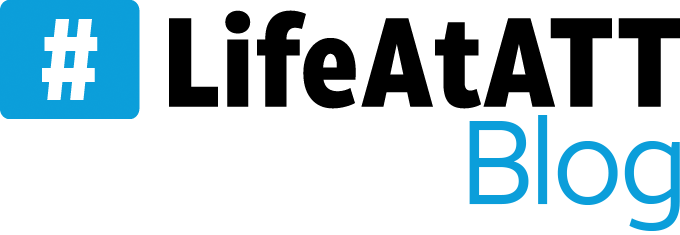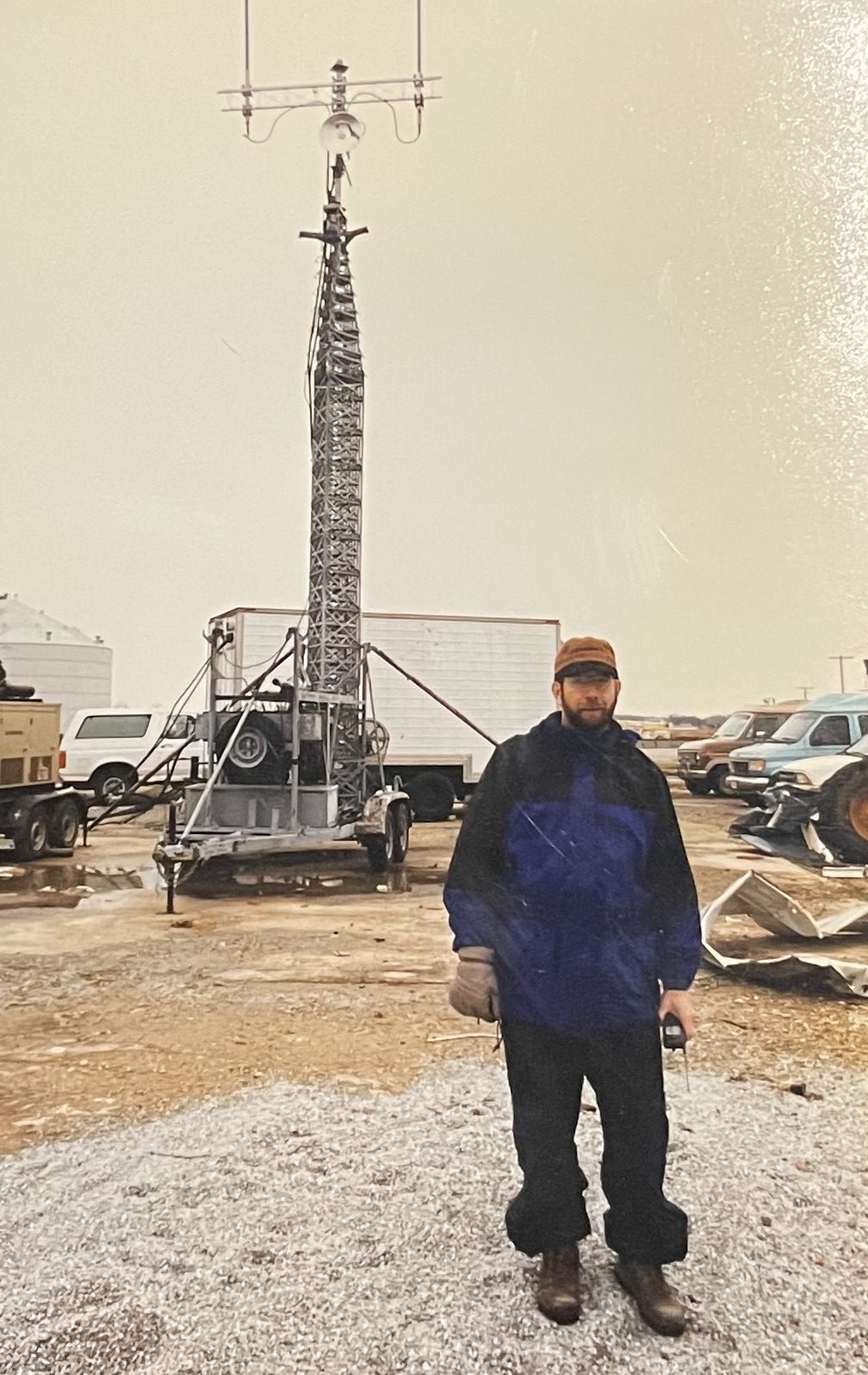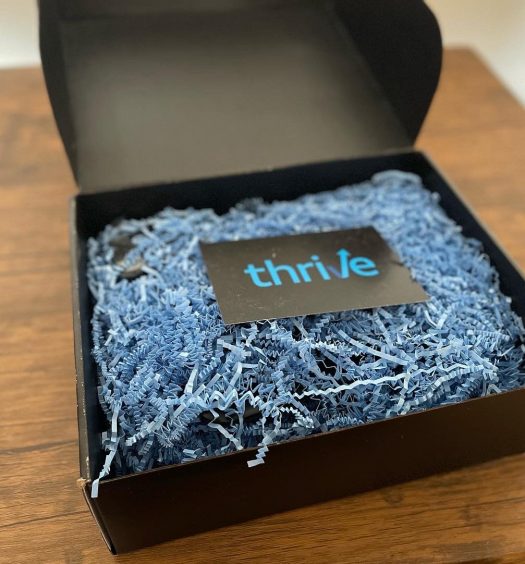When we say we bleed the AT&T blue, that’s one thing. But, when one of us has done so for half a century, that’s another level. For Paul Turner, it’s practically in his veins. Known to most as “Kip,” I recently had the chance to hear more about his incredible 50 year career journey.
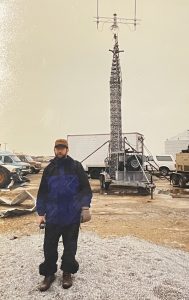 Kip had AT&T blue in his blood before even putting on the uniform, in fact even before he was born. Both of his parents had long careers with AT&T when it was still Southwestern Bell Telephone (SWBT).
Kip had AT&T blue in his blood before even putting on the uniform, in fact even before he was born. Both of his parents had long careers with AT&T when it was still Southwestern Bell Telephone (SWBT).
“My dad was a lineman deployed with the US Army Signal Corps during the Korean War. When he came home, he started with SWBT as an ‘Unlocated Lineman’, moving all over Arkansas mainly installing open-wire toll lines. This is when he met my mom. She was working as an operator in the Newport office.”
After getting married, Kip’s parents relocated to Searcy, Arkansas, where he was born in 1954. When Kip was about a year and a half old, they moved to Conway, Arkansas, where his parents continued working for SWBT. His dad became a ‘Located’ Lineman, and his mother stayed as a local operator.
“I spent hours in the Conway office, waiting on dad to get off work, roaming around the Conway step-by-step switch. I asked everybody I knew what each piece of equipment did, how a step switch worked, why a vacuum tube was blue – I just wanted to know everything! I was genuinely curious, learning much more than I realized, I suppose, and becoming increasingly interested in telephone and electronic equipment.”
Then it was Kip’s turn. After spending two semesters at Arkansas State University as an intended Animal Science major, Kip decided to take a different path. In the summer of 1973, he applied with SWBT and was offered an interview. A few weeks later, a Station Installer position became available in Conway.
“I attended elementary and high school with the local Area Manager’s son (known then as the “Wire Chief” who was responsible for installation, repair, as well as the local switch), and I knew almost every other employee.”
Kip fondly remembers his telephone truck being olive green instead of the white and blue we have today. Anything that was AT&T, had the big gold bell logo on it.
It was the beginning of a lifelong career. What started in August of 1973 has brought more pivotal moments than most careers. We asked Kip to narrow it down to his top memories over the five decades.
1980 – Spent the night in a Titan II Missile command silo
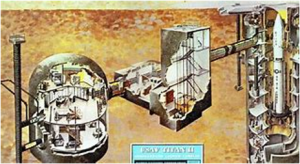 “While I was a Repeater Technician in Morrilton, Arkansas, I was called out on a trouble report after hours to one of the four US Airforce Titan II missile bases where SWBT maintained voice and data circuits. We typically only went to an outdoor cabinet, outside the base, to conduct routine maintenance on the power plant/batteries or make measurements and repairs in those cabinets. This time, however, when I called into the Little Rock Special Services test board, a USAF officer was on the line and insisted that I meet an escort and go down into the control center, several stories underground. The circuit that was out of service, was called the “LES” line and was a direct circuit from the base to SAC Missile command in Offutt, Nebraska. I tried to explain that I had no idea what was down there, or what to do with it, but he wouldn’t take no for an answer. Once there, I ended up spending the entire night troubleshooting, only to be told around 5:00 am the next morning that a farmer in a nearby field had cut the cable, and it had been repaired. All these sites have been decommissioned now, but this was an exciting visit to say the least.”
“While I was a Repeater Technician in Morrilton, Arkansas, I was called out on a trouble report after hours to one of the four US Airforce Titan II missile bases where SWBT maintained voice and data circuits. We typically only went to an outdoor cabinet, outside the base, to conduct routine maintenance on the power plant/batteries or make measurements and repairs in those cabinets. This time, however, when I called into the Little Rock Special Services test board, a USAF officer was on the line and insisted that I meet an escort and go down into the control center, several stories underground. The circuit that was out of service, was called the “LES” line and was a direct circuit from the base to SAC Missile command in Offutt, Nebraska. I tried to explain that I had no idea what was down there, or what to do with it, but he wouldn’t take no for an answer. Once there, I ended up spending the entire night troubleshooting, only to be told around 5:00 am the next morning that a farmer in a nearby field had cut the cable, and it had been repaired. All these sites have been decommissioned now, but this was an exciting visit to say the least.”
1992 – Receiving the Nova Achievement Award
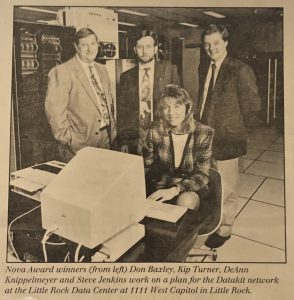 “Along with three of my coworkers, we designed and developed equipment and a network that allowed remote access by technicians of various fiber optic terminals all over the state. As long as they were logged in the SWBT internal data network they could get access from anywhere. Prior to this, technicians would have had to stand directly in front of the equipment to perform maintenance. We reduced dispatch time by improving efficiency in repair and provisioning, utilizing our own internal data services. The success of our work received the Nova Achievement Award, which recognizes an extraordinary call to duty to help processes in support of areas outside of customer service. It was a great feeling to see cross-organization collaboration with Network Operations, Equipment Engineering, Special Services Engineering, and Data Services succeed.”
“Along with three of my coworkers, we designed and developed equipment and a network that allowed remote access by technicians of various fiber optic terminals all over the state. As long as they were logged in the SWBT internal data network they could get access from anywhere. Prior to this, technicians would have had to stand directly in front of the equipment to perform maintenance. We reduced dispatch time by improving efficiency in repair and provisioning, utilizing our own internal data services. The success of our work received the Nova Achievement Award, which recognizes an extraordinary call to duty to help processes in support of areas outside of customer service. It was a great feeling to see cross-organization collaboration with Network Operations, Equipment Engineering, Special Services Engineering, and Data Services succeed.”
1992 – Connecting a Presidential Campaign
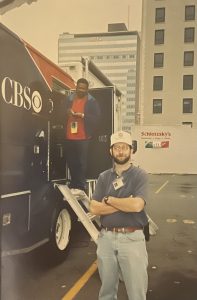 “In preparation for the presidential campaign coming into Little Rock, as part of the Network Engineering and Operations team, we were challenged to upgrade the existing video distribution system and design fiber optic video systems for all three of the major network TV studios, as well as the Little Rock Convention center. We also designed systems for a street location manhole that delivered broadcast video connections to and from multiple broadcast trucks within two blocks of our location. On the day of his visit, I managed satellite connections for multiple international broadcast trucks that were not able to utilize the SWBT fiber optic video systems. There was a lot of movement that week/day and I loved every minute, even when challenges came up.”
“In preparation for the presidential campaign coming into Little Rock, as part of the Network Engineering and Operations team, we were challenged to upgrade the existing video distribution system and design fiber optic video systems for all three of the major network TV studios, as well as the Little Rock Convention center. We also designed systems for a street location manhole that delivered broadcast video connections to and from multiple broadcast trucks within two blocks of our location. On the day of his visit, I managed satellite connections for multiple international broadcast trucks that were not able to utilize the SWBT fiber optic video systems. There was a lot of movement that week/day and I loved every minute, even when challenges came up.”
1997 – Tornado Hits Hickory Ridge, Arkansas
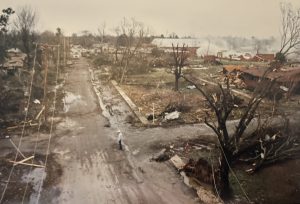 “In March of 1997, a tornado outbreak hit the little town of Hickory Ridge in Northeast Arkansas. At the time, SW Bell Wireless had only recently acquired AT&T Wireless in Arkansas. There was a small town of approximately 500 people who lost all communications. I was tasked with coordinating the deployment of our Cell on Wheels or ‘COW’ to help them reconnect with family and friends, along with helping first responders do their jobs in the recovery efforts. The SWBT central office took a direct hit, lost three of its four walls, and most of the roof, but was still standing and partially operating. SW Bell Wireless and SWBT both responded with temporary solutions that had both wireless service and wireline service back on within two days of the disaster.”
“In March of 1997, a tornado outbreak hit the little town of Hickory Ridge in Northeast Arkansas. At the time, SW Bell Wireless had only recently acquired AT&T Wireless in Arkansas. There was a small town of approximately 500 people who lost all communications. I was tasked with coordinating the deployment of our Cell on Wheels or ‘COW’ to help them reconnect with family and friends, along with helping first responders do their jobs in the recovery efforts. The SWBT central office took a direct hit, lost three of its four walls, and most of the roof, but was still standing and partially operating. SW Bell Wireless and SWBT both responded with temporary solutions that had both wireless service and wireline service back on within two days of the disaster.”
2020 – Installing the wireless system on the USS Paul F. Foster
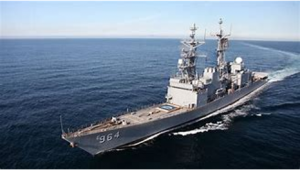 “As part of the US Navy Coastal Trident 2020, I flew to Port Hueneme, California to help deploy and test a system designed to allow Navy ships to host private wireless and FirstNet® capabilities within the ship. The intent was to replace the older land mobile radio (LMR) system with wireless connectivity. This allowed crew members to use AT&T 5G or LTE with their standard handheld devices while at sea, as well as the ability to connect to the FirstNet® network when in port.”
“As part of the US Navy Coastal Trident 2020, I flew to Port Hueneme, California to help deploy and test a system designed to allow Navy ships to host private wireless and FirstNet® capabilities within the ship. The intent was to replace the older land mobile radio (LMR) system with wireless connectivity. This allowed crew members to use AT&T 5G or LTE with their standard handheld devices while at sea, as well as the ability to connect to the FirstNet® network when in port.”
2022 – Developing the Centralized RAN
“Being able to design, develop, and be involved in the implementation of new technologies, 4G and 5G RAN. The highlight has been involvement in the development and deployment of small cell technologies, which was the impetus for Centralized RAN (Radio Access Network). These are the cell sites and related equipment that make the wireless system work.
My current role allows me to see and experience multiple new facets of radio and transport technologies, O-RAN, and various new uses for 5G and beyond, meeting a wide variety of industry peers and clients not typical in this organization.
I never imagined 50 years ago I would have the opportunity to work in the AT&T Labs/CTO organization, doing what I’m doing, and working with and around outstanding minds.”
I learned a lot from Kip. I still don’t quite understand all of it, but now I can’t not see a microwave on top of a building and look to see where it’s bouncing off from or I spot the hidden 5G small cells around the Discovery District. With nine roles, several submitted patents – one granted, and thousands of memories, fifty years is quite an impressive career to learn from. When we asked Kip what he loves most about his #LifeAtATT it was clear.
“This isn’t a ‘just do your job’ environment, but an atmosphere of encouraging and supporting new ideas, ways of thinking, and technologies. Being innovative is key.”
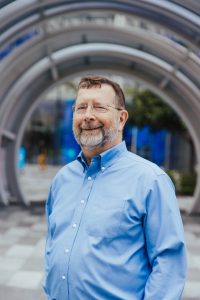
And his advice for the next generation…
“Be patient, things around here always change. Keep learning. Complete your education. Take advantage of the training AT&T has to offer. The more you can see and operate new equipment and systems, the better you will grasp new technologies.”
So, what’s next for Kip, does he have plans to retire?
“Not yet, as long as I’m healthy and productive, I have no plans to end my AT&T career anytime soon.”
Find your start to a long career with usFirstNet and the FirstNet logo are registered trademarks and service marks of the First Responder Network Authority. All other marks are the property of their respective owners.
